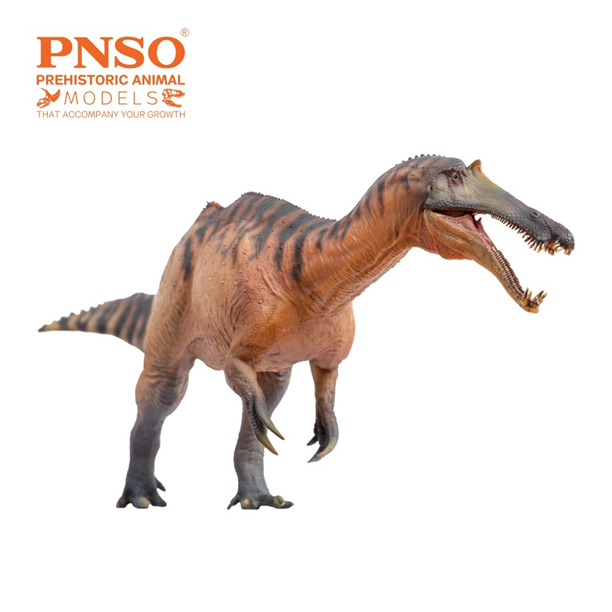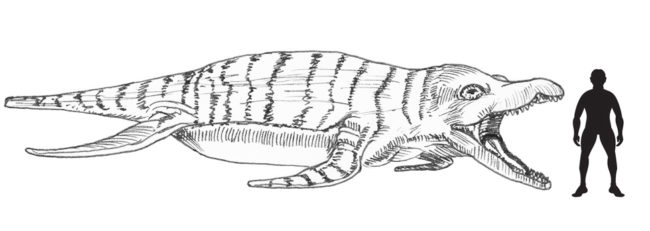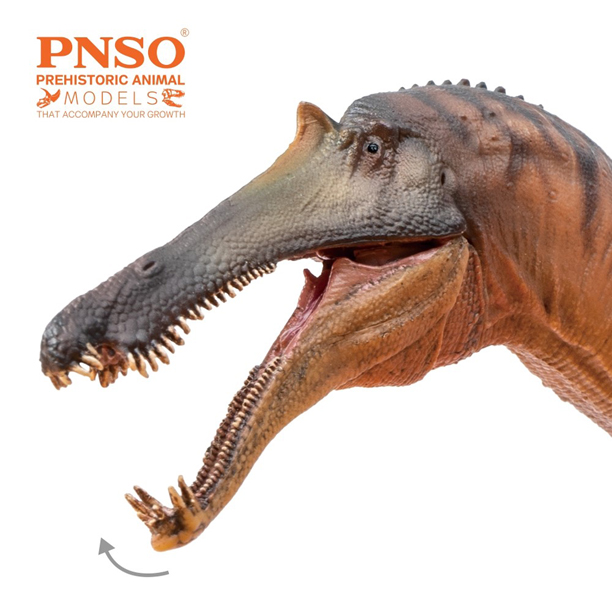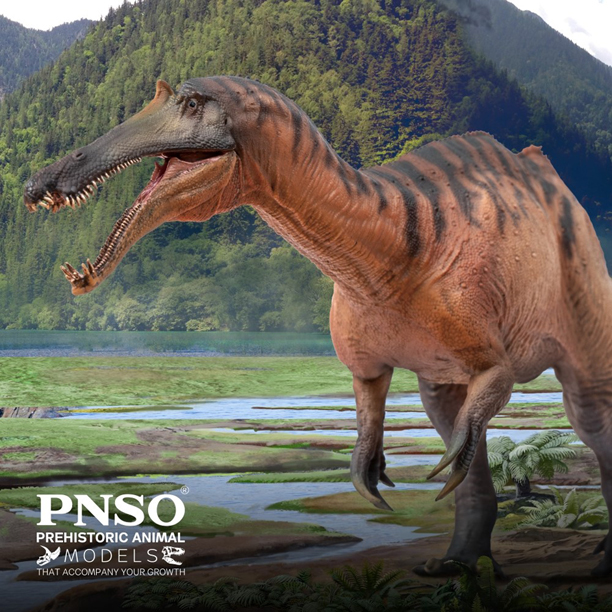Sinopliosaurus – Theropod or Pliosaur? That’s a Great Question!
With the announcement of the new PNSO spinosaurid figure Chongzuo the Sinopliosaurus earlier this week (Monday, 15th August), team members at Everything Dinosaur thought it might be helpful to outline the taxonomic history of this enigmatic theropod. Fragmentary fossils that led to the establishment of the Sinopliosaurus genus were originally thought to represent a marine reptile. One that had lived in a huge freshwater lake during the Early Jurassic around 180 million years ago (Toarcian faunal stage).
Everything Dinosaur expects this dinosaur model to be in stock in the autumn.

PNSO Chongzuo the Sinopliosaurus – an Explanation
Fragmentary bones including three vertebrae, a tooth, elements from the hips (the ischium) and a femur (thigh bone) found in Lower Jurassic (Toarcian faunal stage) Ziliujing Formation exposures at Weiyuan (Sichuan Province, China) were thought to represent a freshwater pliosaur. Although very little of the skeleton was known, the fossil bones that were found were preserved in three-dimensions and not flattened and the pliosaur species Sinopliosaurus weiyuanensis was confidently erected (1944). The femur for example, was described as being of the “usual Plesiosaurian type”, robust, rather squat and not elongated. The ischium was noted as being reminiscent of the Late Cretaceous Canadian plesiosaur Leurospondylus ultimus, which had been erected by Barnum Brown in 1913. L. ultimus itself is a disputed taxon, classified as “incertae sedis”. This marine reptile was described based on fossil material most likely from a juvenile and the material might represent an elasmosaurid.
The taxonomic status of Leurospondylus ultimus remains unresolved.

The genus name (Sinopliosaurus) means “Chinese more lizard”, reflecting the assumed close taxonomic relationship with pliosaurs found elsewhere in the world.
Who Named the Pliosaurus Genus?
It was the English anatomist Sir Richard Owen who first used the genus Pliosaurus (Pliosaurus brachydeirus) back in 1841. Owen mistakenly believed that Pliosaurus was “more” closely related to “saurians” (including crocodilians) than it was to Plesiosaurus.

Sinopliosaurus weiyuanensis (Chung Chien Young) 1944
The scientific description of S. weiyuanensis was published in the Bulletin of the Geological Society of China in 1944 by the eminent, Chinese palaeontologist and zoologist C.C. (Chung Chien) Young. Regarded as the “Father of Chinese vertebrate palaeontology”, his diagnosis was not challenged or questioned.
Spinosaurid fossils from Asia were unknown, the only substantial research into this enigmatic family of dinosaurs had been taking place in Germany (Stromer – Spinosaurus aegyptiacus). As the fossils were similar to those fossils ascribed to pliosaurs, it was thought that these Chinese fossils too, also represented a marine reptile.
Sinopliosaurus fusuiensis (Hou et al) 1975
Five isolated teeth from the Early Cretaceous Xinlong Formation (sometimes referred to as the Napai Formation) found in Fusui County, Guangxi Zhuang Autonomous Region (South China), were described by Chinese palaeontologist Hou Lian-Hai and colleagues and a second species of Sinopliosaurus was erected – S. fusuiensis (1975).
The strata associated with these fossils is difficult to date accurately, but the consensus is that these sediments were deposited around 120 to 100 million years ago (Aptian-Albian faunal stage of the Early Cretaceous). The fossils ascribed to S. fusuiensis were around sixty million years younger than the fossil material associated with S. weiyuanensis.

The Emergence of Asian Spinosaurs – Siamosaurus suteethorni
Fossil teeth collected from the Lower Cretaceous Sao Khua Formation (Barremian faunal stage) in north-eastern Thailand by a joint Thai/French team in the early 1980s led to the conclusion that they represented an unusual theropod dinosaur or possibly an, as yet undescribed crocodyliform. A reassessment of the fossil material in 1986 led to the establishment of the Asian spinosaurid species Siamosaurus suteethorni. Subsequently, other fossil material has been described and assigned to this genus, principally fossils excavated from the slightly geologically younger Khok Kruat Formation of Thailand.
Siamosaurus was the first Asian spinosaur to be described and following its scientific description (Buffetaut and Ingavat, 1986), teeth and other material found in Asia has been reassigned to the Spinosauridae.
In 2008, Buffetaut and colleagues published a scientific paper (Cambridge University Press), that challenged the placement of Sinopliosaurus fusuiensis as a marine reptile. It was concluded that the conical teeth assigned to S. fusuiensis were not typical of a member of the Plesiosauria. Specifically, it was noted that these teeth bear carinae (sharp edges) on the plane of the crown’s curvature, a characteristic not seen in Plesiosauria teeth. Buffetaut et al subsequently re-described the material and stated that the teeth came from a spinosaurid theropod closely allied to Siamosaurus suteethorni.
The exact taxonomic position of S. fusuiensis remains unresolved, although the discovery of potential spinosaurid fossil material in Japan and the naming of the spinosaurid Ichthyovenator (I. laosensis) by Allain et al in 2012 confirms the presence of this enigmatic family of theropod dinosaurs in the Early Cretaceous of Asia.

PNSO Chongzuo the Sinopliosaurus
The PNSO Chongzuo the Sinopliosaurus (S. fusuiensis), is expected in stock at Everything Dinosaur in the autumn of 2022.

To view the wide range of PNSO models and figures available from Everything Dinosaur including Essien the Spinosaurus models: PNSO Spinosaurus and Other Prehistoric Animal Figures.

